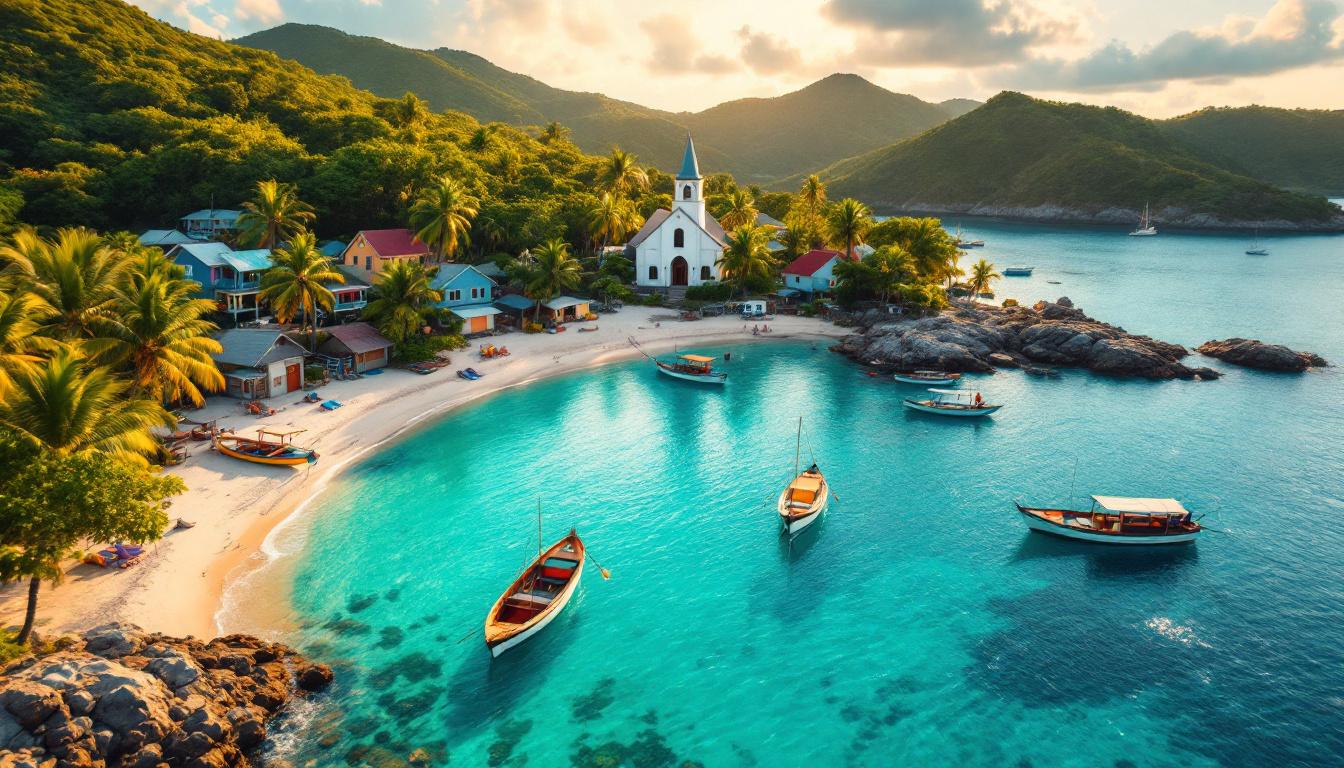When Captain James first told me about Mayreau, he lowered his voice like he was sharing state secrets. “The locals there,” he said, steering his yacht through the Grenadines, “they don’t exactly roll out welcome mats for tourists.” What I discovered on this 0.46-square-mile Caribbean island changed everything I thought I knew about authentic island life.
With just 271 residents protecting their boat-only paradise, Mayreau represents something increasingly rare in the Caribbean: a community that chooses preservation over profit. Unlike the cruise ship chaos of Barbados or the resort sprawl of St. Lucia, this tiny fishing village maintains its authentic rhythm through careful community guardianship.
The island’s natural barriers aren’t accidents—they’re the community’s greatest allies in maintaining the peaceful existence that mass tourism threatens to destroy.
Why boat-only access protects authentic island culture
The community’s natural tourism filter
Mayreau’s boat-only access serves as the community’s most effective protection strategy. With no airport and limited ferry services, only visitors willing to invest in authentic experiences make the journey. This natural barrier ensures that those who arrive respect the island’s pace and traditions, while deterring day-trip crowds that overwhelm neighboring islands.
Local control through infrastructure choices
The island’s single concrete road and absence of an immigration office aren’t oversights—they’re deliberate choices. Residents rely on local boat operators to manage visitor flow, creating an informal but effective system where community members control tourism impact. Post-Hurricane Beryl recovery efforts have reinforced these priorities, with infrastructure rebuilt to community specifications rather than tourist demands.
The fishing village lifestyle tourists threaten
Traditional livelihoods over tourist dollars
In Station Hill village, morning routines haven’t changed in decades. Fishermen still launch before dawn from Saline Bay, while women tend vegetable gardens that feed families rather than resort kitchens. This authentic rhythm faces constant pressure from developers who see dollar signs where locals see home, making community protection efforts increasingly crucial.
Cultural preservation through selective sharing
The island’s Catholic Church from 1930 serves as more than a historical landmark—it’s a symbol of community values that prioritize spiritual and cultural continuity over commercial exploitation. Residents welcome respectful visitors to Sunday services but resist attempts to turn their faith into tourist entertainment, maintaining sacred boundaries that preserve authentic worship.
What locals protect from mass tourism
The double-sided beach sanctuary
Salt Whistle Bay and Saline Bay represent Mayreau’s crown jewels—pristine beaches where locals fish, children play, and visitors can experience Caribbean beauty without commercial intrusion. These twin bays remain uncommercialized not by accident but by community design, with informal agreements preventing large-scale development that would destroy their natural character.
Marine ecosystem preservation efforts
The surrounding Tobago Cays Marine Park exists because locals fought for protection, not because tourists demanded it. Resident efforts to preserve coral reefs and sea turtle nesting sites demonstrate environmental stewardship that tourism often threatens. Community-led snorkeling guidelines ensure visitors experience marine wonders without damaging the ecosystems locals depend on for survival.
Respectful ways to experience protected paradise
Supporting community-controlled tourism
Local boat operators like those running services from Union Island offer authentic access while respecting community wishes. Village restaurants such as The Ranch Escapade prioritize fresh local catches over imported ingredients, ensuring tourism dollars support traditional livelihoods rather than replacing them with artificial alternatives.
Cultural immersion without intrusion
Visitors who earn local respect arrive with humble curiosity rather than entitled expectations. Simple gestures—greeting residents warmly, purchasing from local vendors, respecting quiet hours—demonstrate understanding that this isn’t a resort but a living community where people call home.
Frequently asked questions about visiting Mayreau
How do I reach Mayreau respectfully?
Charter boats from Union Island or join small sailing groups that emphasize cultural sensitivity. Avoid large tour operators that treat the island as a quick photo stop.
What should visitors avoid doing?
Never arrive unannounced expecting services, avoid loud behavior in the village, and don’t photograph residents without permission. Respect the community’s rhythm rather than imposing tourist expectations.
When is the best time to visit?
December through May offers ideal weather, but post-hurricane recovery periods may limit access—confirming arrangements with local operators shows respect for community priorities.
Mayreau’s 271 residents have something most Caribbean destinations lost long ago: the power to choose their island’s future. Their boat-only barriers and community protection efforts aren’t obstacles to overcome but wisdom to respect, offering authentic Caribbean experiences that honor both visitors and locals alike.
